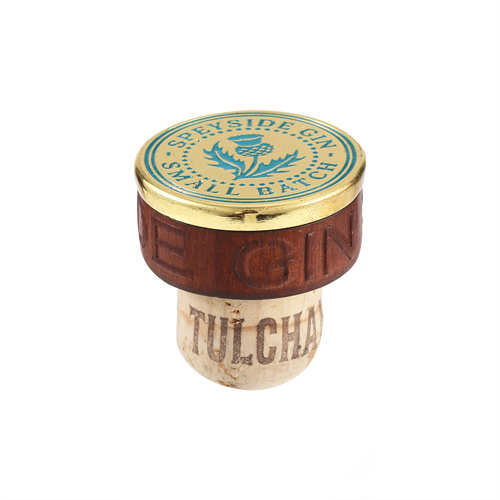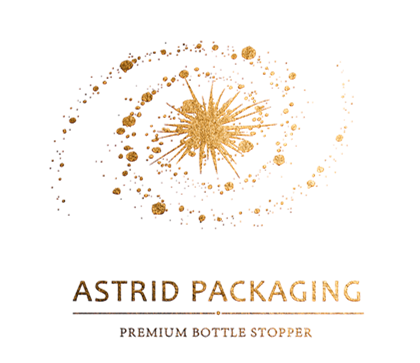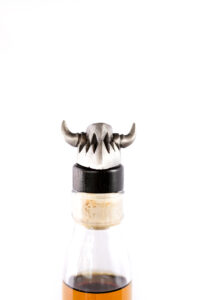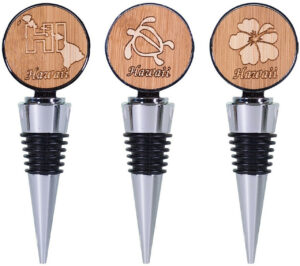Bottle stoppers are an essential tool for preserving the flavor and quality of wine. However, not all bottle stoppers are created equal. The shape of the bottle stopper can play a significant role in the preservation of the wine. In this article, we will explore the science behind bottle stopper shapes and which one is best for preserving wine.
Cork stoppers

Cork stoppers have been the traditional choice for wine bottle closures for centuries. Cork stoppers are made from the bark of cork trees and are natural, renewable, and biodegradable. One of the biggest advantages of cork stoppers is that they allow small amounts of oxygen to enter the bottle, which can help the wine age and develop complex flavors over time.
However, cork stoppers also have some disadvantages. One of the biggest challenges with cork stoppers is that they can be inconsistent in quality. Cork stoppers can be prone to cork taint, a musty odor caused by a chemical compound called TCA. This can cause the wine to have an unpleasant taste and aroma, and in severe cases, the entire bottle can be ruined.
Additionally, cork stoppers can also vary in size and shape, which can make them difficult to insert into the bottle. This can result in air pockets and uneven sealing, which can negatively impact the wine’s preservation.
In terms of preservation, cork stoppers can be effective at preserving wine for short to medium-term storage. However, over longer periods, the cork can dry out and allow too much oxygen into the bottle, resulting in oxidation and spoilage of the wine.
In conclusion, cork stoppers have their advantages and disadvantages when it comes to wine preservation. While they allow for small amounts of oxygen to enter the bottle, which can enhance the wine’s flavor and aging potential, they can also be inconsistent in quality and prone to cork taint. Additionally, over longer periods, they may not be as effective at preserving wine as other types of bottle stoppers. Ultimately, the choice of bottle stopper will depend on the specific needs and goals of the wine producer or consumer.
Screw cap stoppers

Screw cap stoppers are a type of closure commonly used for wine bottles. Traditionally, cork stoppers have been used to seal wine bottles, but screw caps have become increasingly popular in recent years. Here are some advantages and disadvantages of screw cap stoppers and their impact on the preservation of wine.
Advantages of Screw Cap Stoppers:
- Consistency: Screw caps provide a consistent seal for wine bottles, which means there is less risk of oxidation or contamination of the wine.
- Easy to Open: Screw caps are easier to open than traditional cork stoppers, which is convenient for consumers who want to enjoy a bottle of wine without struggling with a cork.
- Cost-effective: Screw caps are generally less expensive than cork stoppers, which can help reduce the cost of production for winemakers.
- No Cork Taint: Cork taint is a phenomenon that can occur when wine is exposed to a faulty cork. Screw caps eliminate the risk of cork taint, which can lead to a better overall wine experience.
Disadvantages of Screw Cap Stoppers:
- Perception: Some wine consumers still view screw caps as a lower-quality option compared to cork stoppers, which can impact the perceived value of the wine.
- Oxygen Exchange: While screw caps provide a consistent seal, they do not allow for any oxygen exchange, which can impact the aging potential of the wine.
- Environmental Impact: Cork stoppers are a natural and renewable resource, while screw caps are typically made of metal or plastic, which may have a negative impact on the environment.
In addition, screw cap stoppers can have a positive impact on the preservation of wine. Because they provide a consistent seal, there is less risk of oxidation or contamination of the wine. This can lead to a longer shelf life for the wine, which is important for consumers who want to age their wine. However, the lack of oxygen exchange can impact the aging potential of the wine. Some winemakers have addressed this issue by using different types of screw caps that allow for controlled oxygen exchange.
In conclusion, screw cap stoppers have advantages and disadvantages, but they can be a good option for winemakers and wine consumers who value consistency and ease of use. While they may not be ideal for wines that require a lot of oxygen exchange during aging, they can be a good option for younger wines that are meant to be consumed relatively soon after bottling.
Synthetic stoppers


Synthetic wine stoppers, also known as plastic corks, have become a popular alternative to natural cork closures over the past few decades. They are made from materials such as thermoplastic elastomers or polyethylene, and they are designed to mimic the shape and function of a traditional cork stopper. While they have their advantages, they also come with some disadvantages, and they can have an impact on the preservation of wine.
Advantages of Synthetic Stoppers:
- Consistency: Synthetic stoppers are manufactured to exacting standards, which means they are much more consistent in terms of size and shape than natural cork stoppers. This consistency can lead to a more reliable seal and better protection for the wine.
- Durability: Unlike natural cork stoppers, synthetic stoppers are not susceptible to cork taint, a musty, moldy odor that can sometimes spoil wine. Synthetic stoppers are also less likely to crumble or break apart, which means they can be easier to remove from the bottle without leaving behind any debris.
- Cost: Synthetic stoppers are typically less expensive than natural cork stoppers, which can make them a more attractive option for wineries and consumers on a budget.
Disadvantages of Synthetic Stoppers:
- Oxygen Transfer: One disadvantage of synthetic stoppers is that they do not allow for the same level of oxygen transfer as natural cork stoppers. While some oxygen is necessary for the aging process, too much oxygen can lead to oxidation and spoilage of the wine.
- Sustainability: Synthetic stoppers are made from plastic, which is not a renewable resource. This means they are not as environmentally friendly as natural cork stoppers, which are biodegradable and can be harvested sustainably.
- Perception: Some wine connoisseurs and consumers view synthetic stoppers as a sign of lower quality wine. While this perception may not be entirely fair, it can still impact the perception of the wine and its overall value.
Impact on Wine Preservation:
The impact of synthetic stoppers on wine preservation can be both positive and negative. On the one hand, synthetic stoppers can provide a more consistent and reliable seal than natural cork stoppers, which can lead to better protection for the wine. On the other hand, the lack of oxygen transfer can impact the aging process and potentially limit the wine’s ability to develop complex flavors and aromas over time.
Overall, synthetic stoppers can be a viable alternative to natural cork stoppers, especially for wineries that prioritize consistency and cost-effectiveness. However, they may not be the best choice for wines that require significant aging or that rely on oxygen transfer to develop their full potential. Ultimately, the choice of closure will depend on the individual needs and preferences of the winery and the wine.
Oxygen and the science of bottle stopper shapes
Oxygen plays a critical role in wine preservation, as it can impact the aging process and influence the overall flavor and aroma of the wine. In small amounts, oxygen can help soften tannins and enhance the complexity of the wine. However, too much oxygen can lead to oxidation, which can cause the wine to spoil and develop off-flavors.
The amount of oxygen that enters a wine bottle can be influenced by the shape and material of the bottle stopper. Different types of stoppers allow varying amounts of oxygen to enter the bottle, which can impact the preservation of the wine.
Natural cork stoppers, for example, are porous and allow a small amount of oxygen to enter the bottle. This can be beneficial for wines that require aging and can help the wine develop complex flavors over time. However, natural cork stoppers can also allow too much oxygen to enter the bottle, leading to oxidation and spoilage of the wine.
Synthetic stoppers, on the other hand, do not allow as much oxygen to enter the bottle. This can be advantageous for wines that do not require significant aging, as it can help preserve the wine and prevent spoilage. However, it may also limit the wine’s ability to develop complex flavors and aromas over time.
The shape of the bottle stopper can also play a role in the amount of oxygen that enters the bottle. For example, tapered stoppers, such as those used in champagne bottles, allow more oxygen to enter the bottle than straight-sided stoppers. This can be beneficial for wines that require aging, as it can help the wine develop more complex flavors and aromas. However, it may also increase the risk of oxidation and spoilage.
In summary, the amount of oxygen that enters a wine bottle can have a significant impact on wine preservation and the aging process. Different types of stoppers, including natural cork and synthetic stoppers, allow varying amounts of oxygen to enter the bottle. Additionally, the shape of the bottle stopper can also impact the amount of oxygen that enters the bottle. Ultimately, the choice of stopper will depend on the individual needs and preferences of the winery and the wine.
In conclusion, choosing the right bottle stopper shape can make a significant difference in preserving the quality of the wine. Tapered stoppers, such as those used in champagne bottles, can help wines develop complex flavors, while straight-sided stoppers and synthetic stoppers can limit the amount of oxygen that enters the bottle, which can be beneficial for wines that don’t require significant aging. Ultimately, the choice of bottle stopper will depend on the type of wine being stored and the desired aging process.





